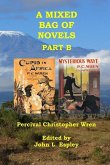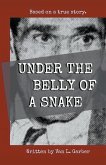"The Earlier India Novels Part B" contains the revised versions of the third and fourth novels written by Wren. Of the four novels comprising "The Earlier India Novels" by Wren, these novels are the closest to what Wren is most famous for: adventure stories. "The Snake and the Sword" is a tightly plotted novel and not a loose knit collection of stories. The major conflict results from the theory that a strong mental shock to a pregnant woman being trapped in a dark room with a snake trapped under her foot would influence the unborn child. This influence would be so strong the child would go into a seizure whenever he encounters a snake in his life. This child, Damocles de Warrenne, grows up the typical all around British empire builder, except for that he collapses at the sight of any snake (dead or alive!). "Driftwood Spars" is the last of the early India novels. It is the story, as the subtitle states "of a man, a boy, and a woman, and certain other people who strangely met upon the sea of life." The principal character is John Robin Ross-Ellison, a son of a Pathan chief and a Scots woman. Ross-Ellison, also known as Mir Jan in his Pathan persona is the connecting link for the other various characters in the novel. There are appendices in this volume that provide details on the significant differences between the first editions published by Longmans, Green, and the reprint editions published by John Murray after the success of "Beau Geste" in 1924.








